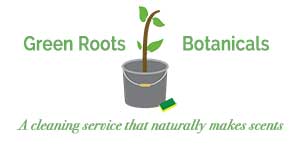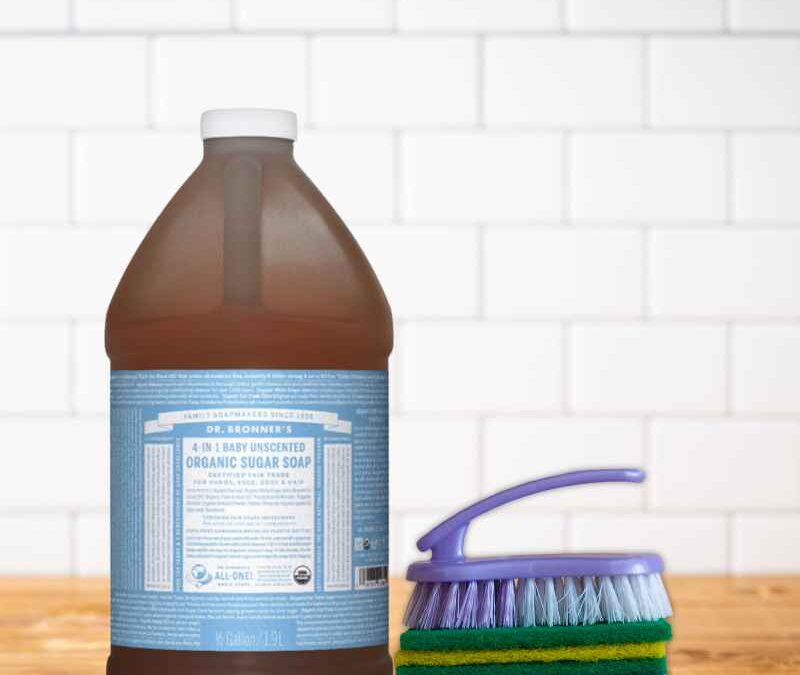What is Sugar Soap?
As an Amazon associate, I earn from qualifying purchases.
Ingredients
Sugar soap, despite its name, doesn’t actually contain sugar as you might find in your kitchen. Instead, it typically comprises a blend of natural ingredients, including:
- Sodium Carbonate: Also known as washing soda, it is alkaline and helps in breaking down grease and dirt.
- Water: A universal solvent that aids in creating a liquid solution suitable for cleaning.
- Sugar: The inclusion of sugar in sugar soap is not for sweetness but may serve various purposes. It can act as a surfactant, helping the solution adhere to surfaces, and may contribute to the overall effectiveness of the cleaning process.
How Sugar Soap Works on Surfaces
Alkaline Power
The alkaline nature of sugar soap is at the heart of its cleaning prowess. This characteristic allows it to:
- Cut Through Grease: Sugar soap effectively tackles greasy surfaces, making it an excellent choice for kitchen cleaning.
- Act as a Surfactant: It acts as a surfactant, meaning it lowers the surface tension of water, enabling it to penetrate and lift away dirt.
Versatility in Cleaning Applications
One of the remarkable features of sugar soap is its versatility in cleaning various surfaces:
- Walls and Ceilings: Ideal for preparing surfaces before painting, sugar soap ensures a clean canvas for a flawless finish.
- Furniture and Woodwork: Gentle enough to clean sealed wooden surfaces without compromising their integrity.
- Kitchen and Bathroom Surfaces: Tackle stubborn stains and soap scum effortlessly, leaving your spaces refreshed.
Eco-Friendly Aspects
In an era where environmental consciousness is paramount, sugar soap stands out for its eco-friendly attributes:
- Biodegradable: Unlike harsh chemical cleaners, sugar soap is biodegradable, meaning it breaks down naturally without harming the environment.
- Safer for Your Home: The natural composition of sugar soap makes it a safer option for your home, reducing the risk of exposure to harmful chemicals.
Using Sugar Soap: A Step-by-Step Guide
Harness the full potential of sugar soap with a simple step-by-step guide:
Necessary Supplies
- Sugar Soap Solution: Mix according to instructions on the container
- Clean Cloth or Sponge: For application and wiping.
- Protective Gloves: Ensure your hands are protected.
- Bucket of Water: For rinsing surfaces effectively.
Preparing the Surface
- Remove Dust: Wipe down surfaces to eliminate loose dust and debris.
- Dilute Sugar Soap: Follow recommended dilution ratios for the specific cleaning task.
- Apply Sugar Soap: Use a cloth or sponge to apply the solution evenly.
Application Techniques
- Circular Motion: Work in circular motions for optimal coverage.
- Focus on Stains: Pay extra attention to stubborn stains or grease buildup.
- Rinse Thoroughly: Ensure all sugar soap residue is rinsed away.
Safety Precautions
- Ventilation: Work in well-ventilated areas to avoid inhaling fumes.
- Protective Gear: Wear gloves and, if necessary, eye protection.
- Read Labels: Follow instructions on the sugar soap product for safety guidelines.
Advantages of Using Sugar Soap
Embrace the numerous benefits that make sugar soap a standout cleaning solution:
- Effective Stain Removal: Tackle tough stains with ease, making it a reliable choice for deep cleaning.
- Versatility in Cleaning Applications: From walls to furniture, sugar soap proves versatile in various household cleaning tasks.
- Environmentally Friendly: Contribute to a greener environment with sugar soap’s biodegradable and eco-friendly formulation.
- Cost-Effective Solutions: Enjoy quality cleaning without breaking the bank with this budget-friendly solution.
Common Mistakes to Avoid When Using Sugar Soap
Ensure optimal results by steering clear of common pitfalls:
- Overlooking Surface Compatibility: Check manufacturer recommendations to confirm suitability for specific surfaces.
- Incorrect Dilution Ratios: Follow instructions diligently to avoid overusing or diluting the solution.
- Neglecting Safety Measures: Prioritize your safety by wearing protective gear and working in well-ventilated areas.
Sugar Soap Brands Comparison
Navigate the market confidently by exploring the top sugar soap brands:
-
Top Brands in the Market:
- As a seasoned cleaning professional my go to brand is always the trusted tried and true Dr. Bronner’s brand. https://amzn.to/3vEs9oT
-
Features and Variations:
- USDA ORGANIC & FAIR TRADE INGREDIENTS
Maintenance Tips for Long-lasting Results
Understanding the Shelf Life of Sugar Soap: Key Points
- Factors Affecting Shelf Life:
- Storage Conditions: Store sugar soap in a cool, dry place away from sunlight.
- Container Quality: Use a well-sealed, airtight container to prevent exposure to air and moisture.
- Typical Shelf Life:
- Liquid Sugar Soap: Usually 1 to 2 years.
- Sugar Soap Powder/Crystals: Often 2 to 3 years.
- Signs of Spoilage:
- Separation: Layers or uneven consistency.
- Foul Odor: Rancid or unpleasant smell.
- Color Changes: Darkening or discoloration.
- Lack of Cleaning Power: Ineffectiveness on surfaces.
- Maximizing Shelf Life:
- Follow Storage Recommendations: Keep it in a cool, dry place, and seal the container tightly.
- Check for Expiry Dates: Look for explicit expiry date information on the packaging.
- Avoid Contamination: Use clean tools, seal the container promptly after use.
Frequently Asked Questions about Sugar Soap
Address common queries to enhance your understanding of sugar soap:
-
Can Sugar Soap be Used on All Surfaces?
- While sugar soap is generally safe for use on a variety of surfaces, there are some considerations to keep in mind. It’s essential to check the manufacturer’s recommendations and be aware of the specific characteristics of certain surfaces. Here are some surfaces where caution is advised:
- Unsealed Wood: Sugar soap is generally safe for wood surfaces, but excessive moisture can be detrimental to unsealed or unfinished wood. It’s advisable to test a small, inconspicuous area first.
- Certain Painted Surfaces: While sugar soap is often used to clean walls before painting, it’s important to check whether the paint is compatible. Delicate or antique paints may be sensitive to alkaline cleaners, so it’s wise to test in an inconspicuous area.
- Natural Stone: Some natural stones, such as marble or limestone, can be sensitive to alkaline substances. Always check with the manufacturer or test a small area to ensure compatibility.
- Electronic Devices: Avoid using sugar soap on electronic devices, as moisture can damage sensitive components. Stick to approved electronic cleaning solutions for gadgets.
- Copper and Brass: Sugar soap can potentially tarnish or discolor copper and brass surfaces. Use caution and consider alternative cleaning methods for these materials.
- Fabric and Upholstery: Sugar soap is not suitable for cleaning fabric or upholstery. Stick to appropriate fabric cleaners for these surfaces.
- While sugar soap is generally safe for use on a variety of surfaces, there are some considerations to keep in mind. It’s essential to check the manufacturer’s recommendations and be aware of the specific characteristics of certain surfaces. Here are some surfaces where caution is advised:
-
Is Sugar Soap Safe for Pets and Children?
- Sugar soap is generally considered safe for use around pets and children when used according to the manufacturer’s instructions. However, it’s essential to take certain precautions to ensure their safety:
- Ventilation: Use sugar soap in well-ventilated areas to minimize exposure to fumes. Open windows or doors to allow fresh air to circulate.
- Keep Pets and Children Away During Cleaning: While cleaning, it’s advisable to keep pets and children away from the areas being treated. Restrict access until the surfaces are dry and any residue is thoroughly rinsed.
- Proper Storage: Store sugar soap out of reach of children and pets. Ensure that the container is securely sealed to prevent accidental spills or ingestion.
- Use in Diluted Form: Follow the recommended dilution ratios specified by the manufacturer. Using sugar soap in its concentrated form may increase the risk of skin irritation for both humans and pets.
- Rinse Thoroughly: After cleaning, ensure that you rinse surfaces thoroughly to remove any remaining sugar soap residue. This step is crucial to prevent accidental ingestion or skin contact.
- Read Labels and Safety Information: Always read and follow the safety instructions provided on the product label. Manufacturers provide specific guidelines to ensure safe use.
If you have specific concerns or if any family members, including pets, have allergies or sensitivities, it’s advisable to consult with a veterinarian or healthcare professional before using sugar soap. Additionally, consider using alternative cleaning products labeled as pet and child-friendly if you want to minimize potential risks.
By following these precautions and guidelines, you can use sugar soap effectively for cleaning while prioritizing the safety of both your family members and pets.
- Sugar soap is generally considered safe for use around pets and children when used according to the manufacturer’s instructions. However, it’s essential to take certain precautions to ensure their safety:
Conclusion
In conclusion, sugar soap emerges as a reliable, eco-friendly, and versatile cleaning companion. Whether you’re preparing surfaces for a fresh coat of paint or tackling stubborn stains, sugar soap proves its worth. Try it for yourself, and witness the magic of a cleaner, healthier home. Happy cleaning!
Purchase sugar soap https://amzn.to/3vEs9oT
Read Next:

Healing the mind body and soul with the power of plants.


